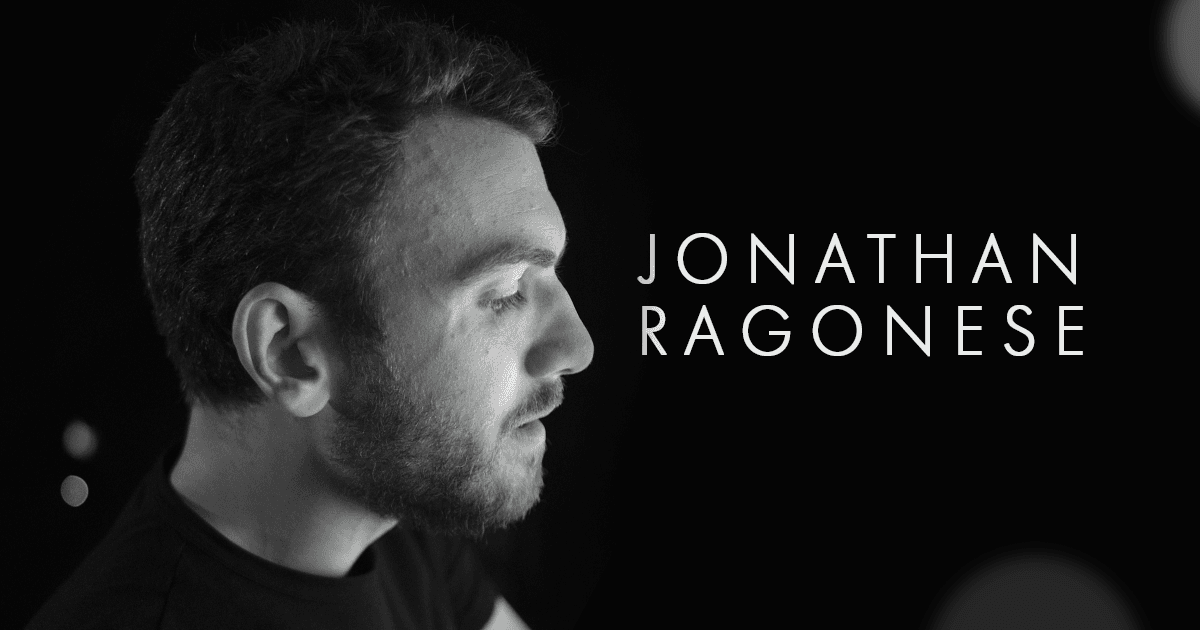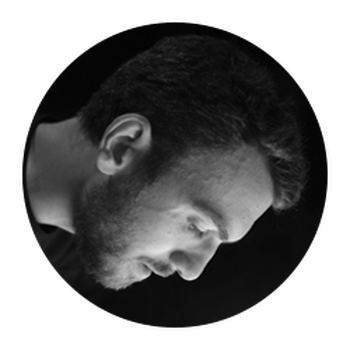A Unique Approach: New Concerto Written for Soprano Saxophone and Wind Ensemble
with Composer Jonathan Ragonese
Date Posted: November 15, 2021

*Full recording can be found at the end of this interview.
How did your concerto for Soprano Saxophone and Wind Ensemble come about?
In the summer of 2021, I had a conversation with the Director of Bands at West Chester University, Dr. Andrew Yozviak. He asked if I was interested in performing a concerto with the wind ensemble. I relayed that I was very much interested, but that I needed to give some thought as to what concerto we might perform. Concerto literature for the soprano saxophone is quite diverse, and there is much of it, however, I find that within that diversity there are a plethora of examples in the extreme of any given subject, and not much that allows the saxophonist time to simply play. Time considerations present the second difficulty – some of the concertos that I appreciate most, are almost an hour long; many of the shorter ones present either extreme technical difficulties for the ensemble, or endless altissimo for the soloist. I’ve played soprano my entire life, and although I respect the endeavor of mastering its voice in the third to fourth register, it has never spoken to me on a musical level. I called Dr. Yozviak back and asked if it would be okay if I might add to the growing literature by writing my own concerto. He agreed and I set down to work!
Why did you choose the soprano saxophone for the solo voice?
I grew up almost exclusively as an improviser. In my early teenage years, I decided to devote myself exclusively to the soprano and tenor saxophones. Tenor was my initial love, and the addition of another saxophone has historically lent itself to the soprano (John Coltrane initially, and I grew up admiring and living close by to Tim Warfield and David Liebman). While dedicating myself more to exact (classical) repertoire, I simply decided to devote myself to soprano first. My improvising voice on the tenor is highly personal and I take many liberties with technique to arrive at some of the sonic possibilities – this presents greater difficulty when attempting to limit those liberties in the realm of concert music. Next on the horizon is a push toward confronting the alto saxophone canon of concert literature.
Let's talk about this piece compositionally. What is an interstice and how is it incorporated in your piece?
An ‘interstice’ is defined as an intervening space, usually very small. It comes from the Latin ‘to stand between’. At the outset of composition, I realized quickly that I wanted something unifying but somehow unrelated to the main movements of the concerto. Each interstice is virtually identical, but each time the scoring is different. In a sense they cleanse the palate and prepare for what is to come.
What about the other movements? Can you briefly talk about those?
The ricercar, passacaglia and quodlibet movements are all old traditional forms. I have long been drawn to the music of the Renaissance and the Baroque periods. In much of my previous work I have played with techniques, colors and the like from those periods, but have never utilized the formality associated with much of the music.
The ricercar is not presented in quite as strict a manner as J.S. Bach illuminated, but does overlay (in the densest ways I could summon) a variety of themes, both canonically and with metric manipulation.
The passacaglia is the strictest form used, and I do not break away from this. The bass theme is an elongated form of a playful song I made up for my young son presented eight times.
The quodlibet is the freest of the ‘forms’ and it was a form that developed in a variety of directions in a 200-year span, then it was nearly abandoned. I focused mainly on the juxtaposition of celebration and humor.
Like all creative individuals, I feel most lucky that I feel able to cultivate relationships with individuals who are no longer living, through their work. I feel personally connected to so many diverse creative artists however, the one that looms largest, only because of his position (the one that opened the main door to the past) is Giacomo Puccini. The quodlibet celebrates his music with over twenty quotations from his nine operas while humorously playing with the content of the previous two movements of the concerto.
Where can saxophonists find this piece?
Currently the piece is available directly through my site for purchase here. I am working on securing a publisher for the work for easier dissemination.
Did you write this piece with yourself in mind as the performer?
Yes. From the beginning I knew that I’d have to play it. And somehow, I still managed to write moments in the concerto that required much practice.
What equipment did you use for this recording and how did you settle on it?
I am most in love with the equipment I’m using in the recording of the concerto. It is a Vandoren V5 series S27 mouthpiece, and the Vandoren Klassik ligature. I also play the Optimum SL3 and the Profile, however when I got my hands on the S27 it allowed me to synthesize the things I liked in those other two mouthpieces. During my preparation I was using a combination of Blue Box, V•12 and V21 reeds (strength 3/3.5)– each one offered something different in the potentials of the music, and moreover the density of the orchestration requires quite a present and penetrating sound from the soloist, and each cut offered something different in this regard.
"...the V5 series, along with the Optimum and Profile mouthpieces always allowed me to find a variety of sounds that I felt comfortable with." - Jonathan Ragonese
What are you looking for in your set ups?
For many years I have experimented with playing smaller ‘classical’ mouthpieces (in the Vandoren line) in every musical situation. As an improviser I find myself in many situations that require a very sensitive tonal palate, and the V5 series, along with the Optimum and Profile mouthpieces always allowed me to find a variety of sounds that I felt comfortable with. It is only in extreme situations as an improviser with certain drummers, where I feel slightly overpowered and desire more. I want to be able to tell the mouthpiece what to do, and not the other way around. When I improvise on the soprano I use the V5 S25 – this is another reason that the S27 was my choice for the concerto: it allowed me to feel very vocal and personal, but while giving me the opportunity to homogenize the sound more easily when I needed to.
The Klassik ligature is hands down the most beautiful thing I have played. The moment I put it on there was a freedom that I only dreamed existed. I used it only a few nights later when playing duo with pianist Orrin Evans and it was equally gratifying in that setting. My only question is when will there be a model for Tenor and Baritone saxophones!?
What is the next piece/project you are working on next?
I am working on three projects currently that I am very excited for, and I hope that I can find the time for each: in 2021-2022 I am an artist-in-residence at Messiah University in Pennsylvania, writing a commission for a double concerto for trumpet and marimba featuring full orchestra and big band that will premiere in April. In March David Liebman will be performing at West Chester University and I am writing a chamber work for a mixed ensemble that features the Dali String Quartet. And lastly, I am working on a very long-term project for the Ulysses Quartet, currently the quartet-in-residence at the Juilliard School. The work is an 18-episode string quartet using the entire scope of musical quotation from James Joyce’s Ulysses.

About Jonathan Ragonese
Jonathan Ragonese, composer-arranger-saxophonist, is a native of New Cumberland, Pennsylvania. He moved to New York City in 2007 to attend the Manhattan School of Music, he has lived and worked there since. As a saxophonist he has performed and recorded with a wide array of musicians including Steve Wilson, David Liebman, the Harrisburg Symphony Orchestra, Tim Warfield, Tin Can Buddha and Steve Rudolph. As a composer his works have been commissioned and premiered by The New York Film Festival, saxophonist Steve Wilson, Jazz @ Lincoln Center, The Museum of Modern Art, the Vermont Mozart Festival Orchestra, the Harrisburg Symphony, the The Righteous Girls, Bucknell University, West Chester University and the Harrisburg Youth Symphony. Pandora’s Box, a new film score for G.W. Pabst’s iconic film, was commissioned by the Film Society of Lincoln Center and premiered at Alice Tully Hall in October of 2017, with Jonathan conducting a 17-piece ensemble. In 2014 Ragonese premiered his ‘Not-this’ for two saxophones, at Carnegie Hall. Jonathan is the Director of Jazz Studies and Instructor of Saxophone at West Chester University of Pennsylvania. Active educational endeavors include lectures, writings, and the development of Music Before Words, a music program for infants with educator Renee Bock. His first recording, Ardent Marigolds, was released in 2013, a duo with musical father Steve Rudolph. two men, singing, a duo album with saxophonist Tim Warfield was released the summer of 2018.